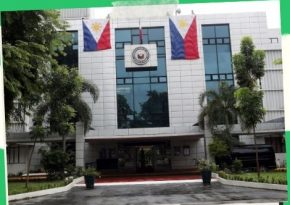
Marcos plans to use a better road map to achieve rice self-sufficiency.
On Wednesday, President Ferdinand R. Marcos Jr. stressed the significance of intensifying the government’s efforts to meet the nation’s goal of “97.4 percent” rice self-sufficiency.
In a Pasay City interview, Marcos claimed to have called a conference of the rice business to discuss consolidation and digitalization initiatives to boost the rice industry at the National Irrigation Administration’s (NIA) Convention Hall.
The official said it is essentially the road map for achieving 97.4% rice self-sufficiency.
The required percentage is 97 percent. You’re not required to purchase 100% of the three percent, the least expensive items, the organic or Japanese rice if you choose. The word “ganoon” Because the remaining 3 percent of products—which include organic, specialty grains, and Japanese rice—are the least common, we cannot provide for you. We are no longer required to do that),” he continued.
According to Marcos, increasing rice output and enabling local farmers to utilize new technology need agricultural consolidation or the reallocation of land parcels.
According to Marcos, land consolidation would require extensive mechanization, which would assist in boosting the nation’s crop yield.
“We talked about the consolidation of the farmers because the first step we need to take to increase production and drive down the price is to mechanize [the farms],” Marcos said. “Dahil ang unang hakbang na kailangan nating gawin para magkaroon ng increased production at saka ibaba ‘yung presyo ng produksyon ay kailangang i-mechanize.”
“Hindi ka makapag-mechanize when the only inaaro mo.six hectares. As the saying goes, if you are only plowing, you cannot mechanize. Six hectares. That is the typical land size),” he remarked.
A goal to recruit more young Filipino farmers who will be trained in the use of innovative agricultural technologies was also mentioned by Marcos.
Again, to accomplish that, we involve them in using new technologies as they will operate those and new technical systems. And because of it, he said young people will find it attractive to enter the industry.
Moreover, he stated that his administration intended to give “good data” to the farmer leaders.
The executives of Thailand’s Charoen Pokphand Group (CP Group) paid him a courtesy call at Manila’s Malacaan Palace the day before the meeting at the NIA office. They announced their intention to invest about USD2.5 billion (PHP140.8 billion) to further the Philippines’ agricultural sector.
New technology will be used in the CP Group’s expansion ambitions for swine ($1.3 billion), poultry ($280 million), shrimp ($800 million), and food ($120 million).
Marcos stated that he is “excited” about the CP Group’s proposed expansion of activities in the nation. He emphasized that he wants the “very aggressive” usage of new technology by the Thai company to be adopted right now.
He claimed that the nation possesses “good” and “highly-experienced” scientists, agronomists, agriculturalists, and researchers who could aid in aiding the agricultural industry’s advances.
“We have all the necessary components, but they do not now appear to be in place. Therefore, what we’re attempting to do is combine these components. And they (CP Group) can assist us because they have already completed it, stated Marcos.
“They’re going to construct another plant three years later… We desire to be there. That is the speed and level of agility we desire to achieve. We hoped they could assist us with that, and they agreed,” he continued.
According to a second statement from Communications Secretary Cheloy Garafil, Marcos approved the Masagana Rice Industry Development Program (MRIDP), developed by the Department of Agriculture (DA), which he presently chairs.
Garafil stated that the MRIDP would use several methods to assist farmers, boost rice output, and develop the rice value chain.
She said the program will be implemented using several tactics, including a value chain approach, digital transformation, farm clustering and consolidation, and adaptation to climate change.
The convergence of all parties involved in the growth of the rice sector is a crucial element of the MRIDP, according to Garafil, to combine resources, exchange information, and coordinate initiatives to increase rice farmers’ incomes and achieve sustainable rice production.
According to DA data, the average palay yield and the total harvest area for palay (unhusked rice) decreased in 2022.
According to the DA, approximately 14.94 million metric tons (MMT), or 75.6% of the 19.76 million MMT of unhusked rice in 2022, were produced in irrigated areas, and the remaining 24.4%, or 4.82 MMT, were in non-irrigated areas.
In 2022, Central Luzon (3.62 MMT), Cagayan Valley (2.93 MMT), Western Visayas (2.32 MMT), Ilocos Region (1.96 MMT), and Bicol Region (1.33 MMT) produced the most rice.
Save/Share this story with QR CODE
Disclaimer
This article is for informational purposes only and does not constitute endorsement of any specific technologies or methodologies and financial advice or endorsement of any specific products or services.
 Need to get in touch?
Need to get in touch?

We appreciate your reading. 
1.) 

Your DONATION will be used to fund and maintain NEXTGENDAY.com
Subscribers in the Philippines can make donations to mobile number 0917 906 3081, thru GCash.
3.) 
4.) 
AFFILIATE PARTNERS

World Class Nutritional Supplements - Buy Highest Quality Products, Purest Most Healthy Ingredients, Direct to your Door! Up to 90% OFF.
Join LiveGood Today - A company created to satisfy the world's most demanding leaders and entrepreneurs, with the best compensation plan today.

 Business, Finance & Technology
Business, Finance & Technology

 Business Technology, Finance Technology & Information Technology
Business Technology, Finance Technology & Information Technology





